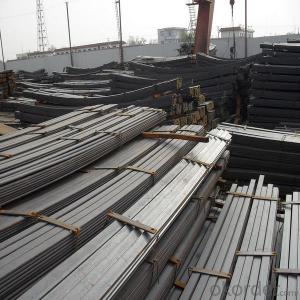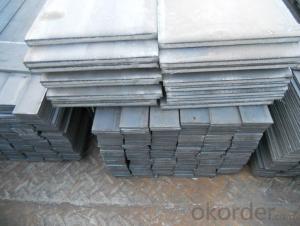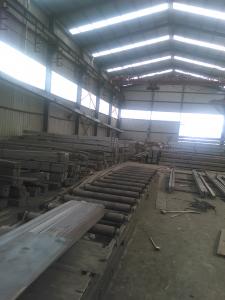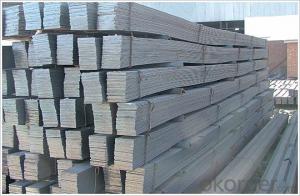Cold Rolled Drawn Slit Cutting Steel Flat Bar for Re-Selling
- Loading Port:
- China main port
- Payment Terms:
- TT or LC
- Min Order Qty:
- 25 m.t.
- Supply Capability:
- 10000 m.t./month
OKorder Service Pledge
OKorder Financial Service
You Might Also Like
1. Structure of Cold Rolled Drawn Slit Cutting Steel Flat Bar Description:
Cold rolled drawn slit cutting steel flat bar is a beam with an I-shaped cross-section. The horizontal elements of the "I" are known as flanges, while the vertical element is termed the "web". Cold rolled drawn slit cutting steel flat bar is usually made of structural steel and is used in construction and civil engineering. The cold rolled drawn slit cutting steel flat bar resists shear forces, while the flanges resist most of the bending moment experienced by the beam. Cold rolled drawn slit cutting steel flat bar theory shows that the I-shaped section is a very efficient form for carrying both bending and shears loads in the plane of the web.
2. Main Features of Steel Flat Bar Chinese Standard Slit and Cut Form:
• Grade: Q235
• Type: Mild carbon steel
• Deflection: The stiffness of the I-beam will be chosen to minimize deformation
• Vibration: The stiffness and mass are chosen to prevent unacceptable vibrations, particularly in settings sensitive to vibrations, such as offices and libraries.
• Local yield: Caused by concentrated loads, such as at the beam's point of support.
3. Steel Flat Bar Chinese Standard Slit and Cut Form Images:
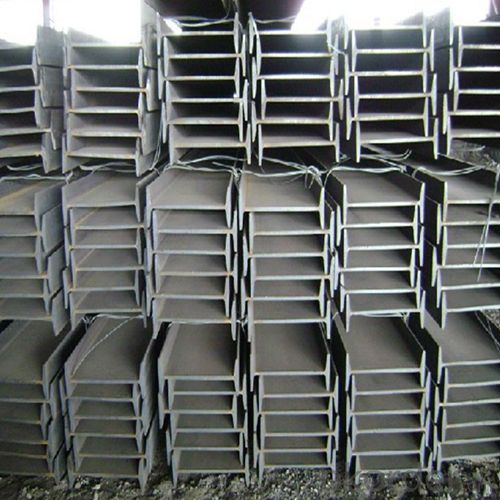
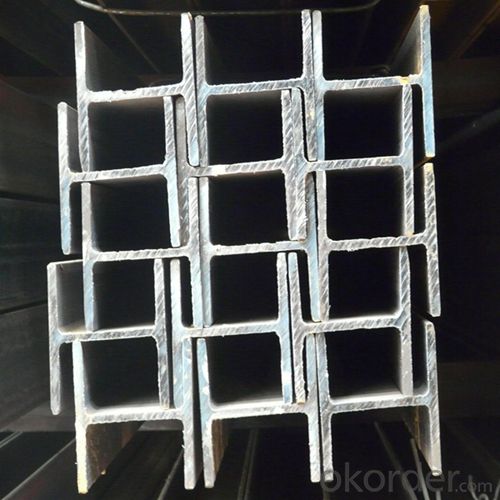
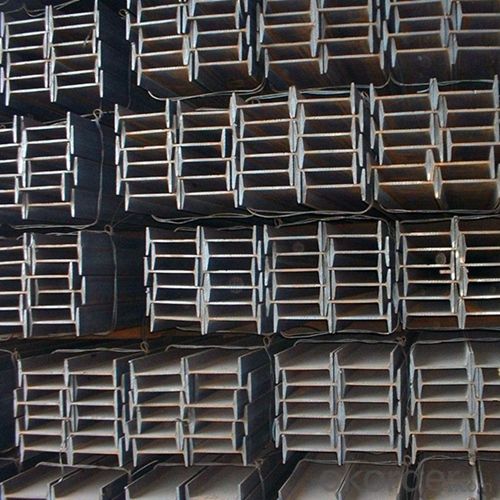
4. Steel Flat Bar Chinese Standard Slit and Cut Form Specification:
Alloy No | Grade | Element(%) | ||||
C
| Mn
| S
| P
| Si
| ||
Q235
|
B
|
0.12—0.20 |
0.3—0.7 |
≤0.045 |
≤0.045
|
≤0.3
|
Alloy No | Grade | Yielding strength point(Mpa) | Tensile strength (Mpa) | Elongation after fracture(%) | ||||||
Thickness (mm) | Thickness (mm) | |||||||||
≤16 | >16--40 | >40--60 | >60--100 | ≤16 | >16--40 | >40--60 | >60--100 | |||
≥ | ≥ | |||||||||
Q235 |
B |
235 |
225 |
215 |
205 |
375--500 |
26 |
25 |
24 |
23 |
5. FAQ
We have organized several common questions for our clients,may help you sincerely:
①Is this product same as W beam?
In the United States, the most commonly mentioned I-beam is the wide-flange (W) shape. These beams have flanges in which the planes are nearly parallel. Other I-beams include American Standard (designated S) shapes, in which flange surfaces are not parallel, and H-piles (designated HP), which are typically used as pile foundations. Wide-flange shapes are available in grade ASTM A992,[4] which has generally replaced the older ASTM grades A572 and A36.
②How to inspect the quality?
We have a professional inspection group which belongs to our company. We resolutely put an end to unqualified products flowing into the market. At the same time, we will provide necessary follow-up service assurance.
③Is there any advantage about this kind of product?
Steel I beam bar IPE has a reduced capacity in the transverse direction, and is also inefficient in carrying torsion, for which hollow structural sections are often preferred.
- Q:Are steel flat bars suitable for automotive applications?
- Steel flat bars are indeed appropriate for automotive applications. Steel is a robust and resilient material that can endure the demanding requirements of the automotive sector. The versatility and simplicity of utilizing flat bars make them a common choice for automotive applications. They can be effortlessly customized, molded, and joined together to suit particular automotive components, thereby making them perfect for constructing frames, brackets, supports, and other structural elements. Furthermore, steel flat bars offer exceptional strength-to-weight ratio, corrosion resistance, and cost-effectiveness, rendering them highly favored in the automotive industry.
- Q:Can steel flat bars be used for creating shelving or storage systems?
- Yes, steel flat bars can be used for creating shelving or storage systems. Steel flat bars are known for their strength and durability, making them an ideal choice for supporting heavy loads on shelves. They can be easily welded or bolted together to create sturdy structures that can hold various items such as books, tools, or even heavy equipment. Additionally, steel flat bars can be cut to custom lengths, allowing for the creation of shelves that fit specific storage needs. Overall, steel flat bars provide a reliable and long-lasting option for constructing shelving or storage systems.
- Q:Can steel flat bars be cut to length?
- Yes, steel flat bars can be cut to length. Steel flat bars are versatile and can be easily cut using various cutting tools such as saws, shears, or plasma cutters. The process of cutting steel flat bars to length is commonly done in fabrication shops or construction sites to meet specific project requirements. With the appropriate tools and techniques, steel flat bars can be accurately and cleanly cut to the desired length.
- Q:What is the maximum length-to-width ratio for steel flat bars?
- The maximum length-to-width ratio for steel flat bars may vary depending on the specific manufacturing standards and requirements. However, in general, the length-to-width ratio for steel flat bars is typically around 6:1. This means that the length of the bar can be up to six times its width. It's important to note that this ratio may be subject to variations depending on the specific application or industry standards.
- Q:How do steel flat bars perform under impact or shock-loading conditions?
- Steel flat bars generally perform well under impact or shock-loading conditions due to their high strength and resilience. The toughness and ductility of steel allow it to absorb and distribute the energy generated during impact, reducing the risk of deformation or fracture. Additionally, steel's ability to withstand high forces and maintain its structural integrity makes it a reliable choice for applications requiring resistance to impact or shock-loading.
- Q:What are the different shapes available in steel flat bars?
- Steel flat bars come in various shapes, each designed to meet specific requirements and applications. Some of the different shapes available in steel flat bars include flat, round-edged, square-edged, and round. 1. Flat shape: This is the most common and basic shape of steel flat bars. It has a rectangular cross-section with two parallel and flat surfaces. Flat bars are widely used in construction, manufacturing, and fabrication industries for structural support, framework, and general applications. 2. Round-edged shape: Steel flat bars with round edges have a slightly curved or rounded profile on the edges. This shape is preferred when the flat bar may come in contact with other materials or people, as it reduces the risk of injuries or damage caused by sharp edges. Round-edged flat bars are commonly used in furniture, automotive, and architectural applications. 3. Square-edged shape: Similar to the flat shape, square-edged steel flat bars have sharp, square corners. This shape is ideal when precise right angles are required or when the flat bar needs to fit into specific slots or joints. Square-edged flat bars are commonly used in construction, machinery, and manufacturing industries. 4. Round shape: While not technically a "flat" bar, steel round bars are widely used in various industries. Round bars have a circular cross-section and are often used for applications that require strength, durability, and resistance to deformation. They are commonly used in construction, engineering, and automotive applications. It is important to note that these are just a few examples of the different shapes available in steel flat bars. Manufacturers may offer custom shapes and profiles to meet specific project requirements.
- Q:Are steel flat bars suitable for architectural metalwork?
- Yes, steel flat bars are suitable for architectural metalwork. They are versatile and commonly used in various architectural applications such as framing, support structures, decorative elements, and trim work. With their strength, durability, and ability to be easily shaped and welded, steel flat bars provide architects and designers with a reliable material option for creating aesthetically pleasing and functional architectural features.
- Q:What are the different methods of fastening steel flat bars to other materials?
- There are several methods of fastening steel flat bars to other materials, including welding, bolting, riveting, adhesive bonding, and using specialized connectors such as steel brackets or clips.
- Q:Do steel flat bars have a specific grain orientation?
- No, steel flat bars do not have a specific grain orientation. Unlike materials such as wood or some types of metals, steel does not possess a visible grain structure. Steel is an alloy composed mainly of iron and carbon, along with other elements, and its microstructure consists of tiny crystals called grains. However, these grains are randomly oriented in steel, meaning there is no particular direction or pattern to the grain orientation in flat bars. This random grain structure contributes to the isotropic properties of steel, making it equally strong and durable in all directions.
- Q:How do you determine the hardness of a steel flat bar?
- To determine the hardness of a steel flat bar, you can employ various methods, including the Rockwell hardness test, Vickers hardness test, Brinell hardness test, or the Shore hardness test. The Rockwell hardness test is the most commonly used method for determining the hardness of steel. It involves pressing an indenter into the surface of the flat bar under a specific load. The depth of penetration is measured and used to calculate the Rockwell hardness number, which indicates the steel's hardness level. The Vickers hardness test is another frequently used method that involves pressing a diamond indenter into the flat bar's surface. The size of the indentation is measured, and the Vickers hardness number is determined based on the applied load and the surface area of the indentation. The Brinell hardness test is suitable for softer steels and involves pressing a hardened steel ball into the surface of the flat bar under a specific load. The diameter of the indentation is measured, and the Brinell hardness number is calculated based on the applied load and the surface area of the indentation. The Shore hardness test is commonly used for softer materials and involves measuring the resistance of the flat bar's surface to indentation using a durometer. The durometer measures the depth of penetration of a specific indenter and provides a hardness reading on the Shore hardness scale. Overall, the specific method you choose to determine the hardness of a steel flat bar depends on factors such as the hardness range of the steel, the available testing equipment, and the accuracy required. Consulting with a material testing professional or referring to applicable standards can help ensure the appropriate method is used for accurate hardness evaluation.
1. Manufacturer Overview |
|
|---|---|
| Location | |
| Year Established | |
| Annual Output Value | |
| Main Markets | |
| Company Certifications | |
2. Manufacturer Certificates |
|
|---|---|
| a) Certification Name | |
| Range | |
| Reference | |
| Validity Period | |
3. Manufacturer Capability |
|
|---|---|
| a)Trade Capacity | |
| Nearest Port | |
| Export Percentage | |
| No.of Employees in Trade Department | |
| Language Spoken: | |
| b)Factory Information | |
| Factory Size: | |
| No. of Production Lines | |
| Contract Manufacturing | |
| Product Price Range | |
Send your message to us
Cold Rolled Drawn Slit Cutting Steel Flat Bar for Re-Selling
- Loading Port:
- China main port
- Payment Terms:
- TT or LC
- Min Order Qty:
- 25 m.t.
- Supply Capability:
- 10000 m.t./month
OKorder Service Pledge
OKorder Financial Service
Similar products
New products
Hot products
Related keywords
